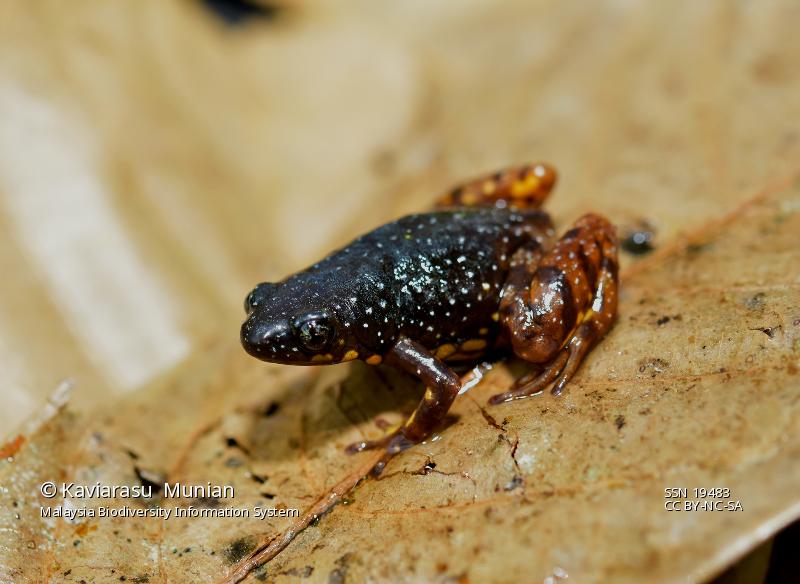
Chaperina fusca, commonly known as the Saffron-bellied frog, is a terrestrial amphibian in the family Microhylidae and was first described from Sintang, Borneo by F. Mocquard in 1892 (Mocquard, 1892). It is the only species under the genus Chaperina. This frog is native to Southeast Asia where it can be found in Peninsular Malaysia, Borneo, and some islands in the southern Philippines. In Peninsular Malaysia, it can be found mainly in Perak, Pahang and Pulau Tioman while in the Philippines, it can be found on the islands of Palawan, Mindanao, and Jolo. It occurs in primary or mature secondary forest, in hilly areas and adjacent lowlands.
The adult frog may not be as attractive as other colorful amphibians but the interesting feature of this species is the large yellow spots found on its belly. These yellow spots are also visible along its lower flanks and can sometimes be larger in some individuals due to merging of the spots. The adult C. fusca is dark brown to black in colour with marbled bluish coloration on its dorsum but this can vary in each individual. Some individuals may be greyish with bluish or greenish spots. The male is usually smaller than the female where it barely reaches 20mm in length. This species is normally small in size averaging 18mm to 26mm which makes it difficult to find in nature. Its tadpole is typically small, slightly flattened above and oval in shape. Its body is black above and paler underneath while the fins are transparent. When viewed from above, the eyes of the tadpole reflect a silver iris ring (Das et al., 2007).
Generally, it is easy to distinguish a typical frog call from the calls of other animals or insects. However, it is difficult to recognise this species from its call as the call of the male is more insect-like and not very loud. Apart from being terrestrial, C. fusca is also a scansorial species, that is, it has an ability to climb. It usually becomes active after rain and perches on the forest floor and lower vegetation. The male calls to attract the female while resting in a small pool of rainwater that has accumulated inside a tree trunk or holes in trees. At times, some individuals climb up trees or buttresses to call for their mates to breed.
Chaperina fusca is classified as least concern (LC) under the International Union for Conservation of Nature (IUCN). The population trend of this species is unknown but it is abundant in Borneo, uncommon in Peninsular Malaysia and patchily distributed in the Philippines. The major threats to the species include the pollution of streams and rivers, deforestation and habitat conversion to agriculture (IUCN SSC Amphibian Specialist Group, 2004).
